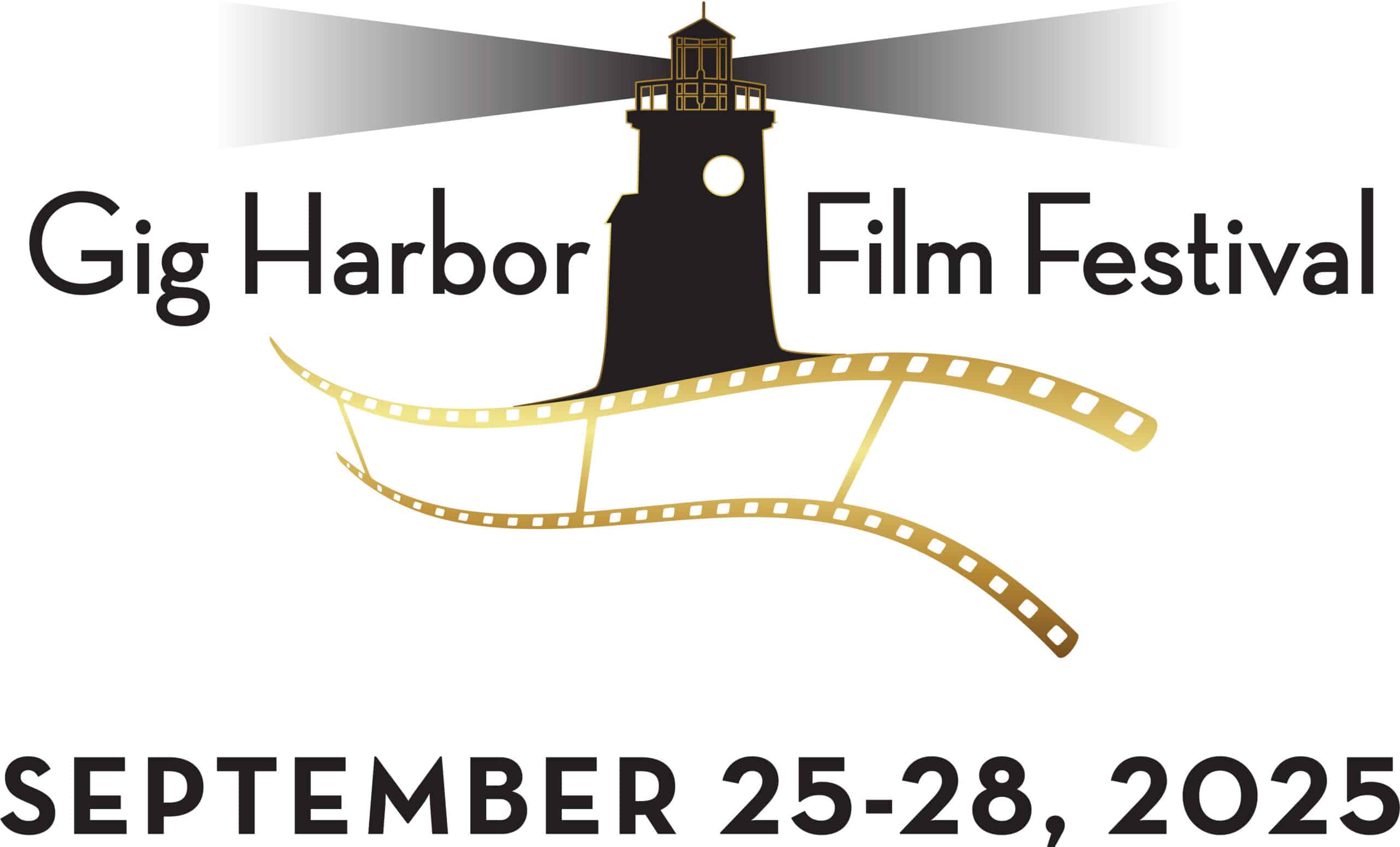Arts & Entertainment Community
Jennifer Preston | Crafting community — start with art
For health, wellness and fun, it’s time to push the boundaries of community engagement beyond annual holiday tree lightings and parades. It’s time to blend public art and craft community.
Arts & Entertainment Sponsor
Arts & Entertainment stories are made possible in part by the Gig Harbor Film Festival, a proud sponsor of Gig Harbor Now.
What is public art?
When people think of “public art,” they may imagine an abstract sculpture located near a civic center. Or perhaps a figure, cast in bronze, memorializing a tradition or historic person — like the fisherman pulling in his net at Skansie Brothers Park.
“Lost at Sea” was made by Alexander Safonov as a tribute to the fishermen of Gig Harbor who died at sea.
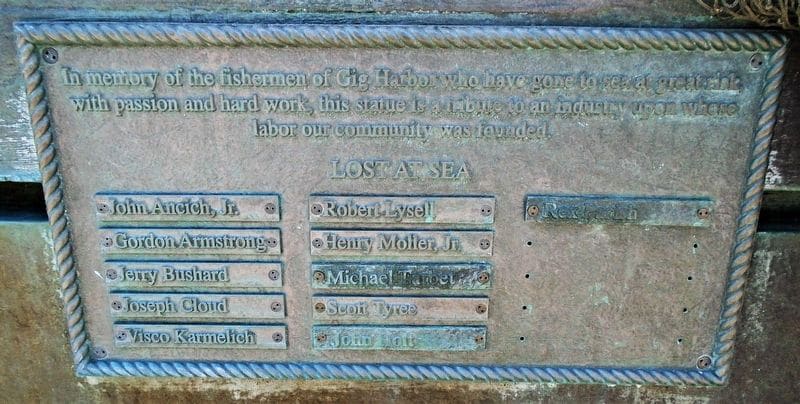
Lost at Sea, at Skansie Brothers Park, memorializes local fishermen.
Inscription: In memory of the fishermen of Gig Harbor who have gone to sea at great risk with passion and hard work, this statue is a tribute to an industry upon whose labor our community was founded. LOST AT SEA: John Ancich, Jr., Gordon Armstrong, Jerry Bushard, Joseph Cloud, Visco Karmelich, Robert Lysell, Henry Moller, Jr., Michael Tarbet, Scott Tyree, John Holt, Rex Parish
Our Fisherman, Our Guardian
Consider Gig Harbor’s newest piece of public art, the carving, “Our Fisherman, Our Guardian” at Austin Park’s txʷaalqəł Estuary by Guy Capoeman, artist and president of the Quinault Nation.
“The One with All, the Ancient Ancestor” says Capoeman of the sculpture that stands guard near the water at the site of an old village first inhabited by the sx̌ʷəbabš band of the Puyallup Tribe of Indians.
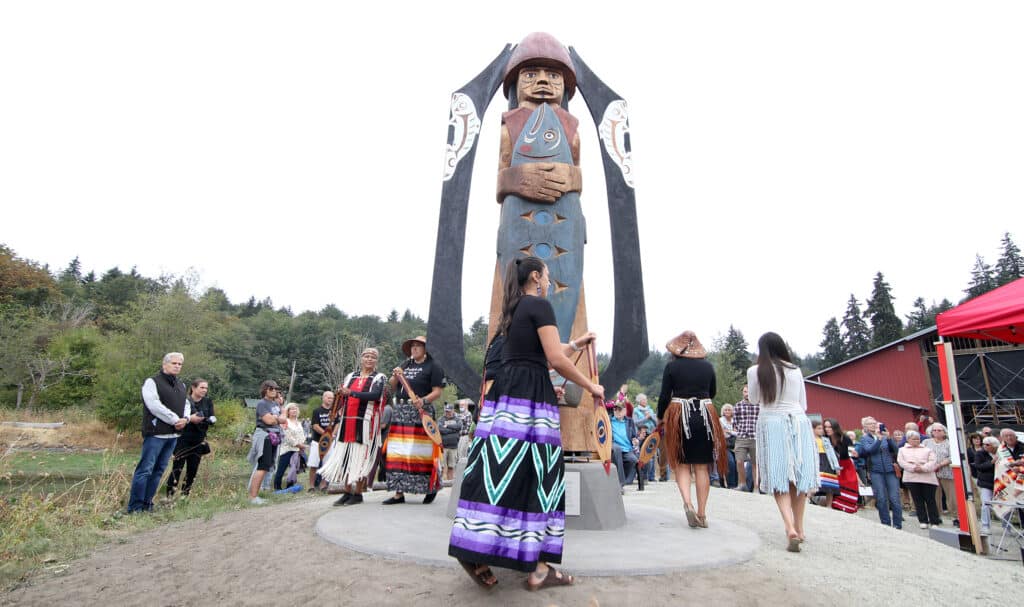
Dancers circle Our Fisherman, Our Guardian during its dedication ceremony in 2022. Larry Steagall
It depicts a Salish fisherman holding a salmon flanked by Southern Salish-style canoes and honors a way of life, connection to the water and the people that came before, whom the artist says are still present on the land.
Public art can be large scale or small, permanent or temporary, located indoors or out. It can take the form of just about any artistic discipline, from visual art like sculptures and murals, to more ephemeral work like chalk drawings and sand paintings that last only a short amount of time.
Art has a wonderful way of growing and changing with technology. It can appear as a projected digital image or be integrated into architectural features and landscaping. 3-D spaces that invite people to explore altered reality using visuals and sound is called installation art, like the famous Van Gogh Immersive Experience.
Why public art matters
Public art creates social cohesion by weaving together the history of a community. It is a symbol that helps orient citizens to their environment; a physical representation of a point in time, marking the passage of people across place.
According to Americans for the Arts, public art matters because “it reflects and reveals our society, enhances meaning in our civic spaces, and adds uniqueness to our communities. Public art humanizes the built environment.”
Public art offers cultural understanding, adds a sense of belonging and reflects the values or heritage of a community. It can raise awareness about important social, political and environmental issues, help stimulate dialogue and encourage critical thinking.
Cities that feature robust art programs enhance the lives of their citizens, support working artists and boost local economics.
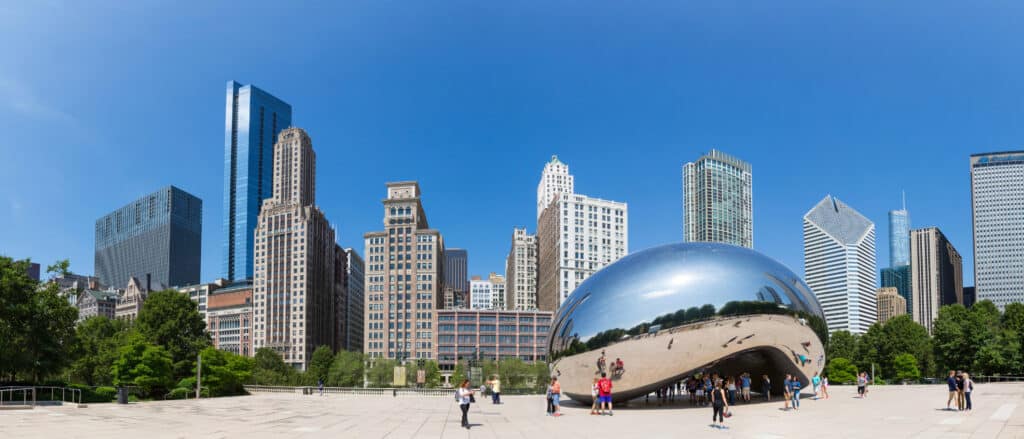
Cloud Gate, a public sculpture by Anish Kapoor in Milenium Park in Chicago.
The arts create community
Start with art, add a dash of ceremony.
When most people experience art, it’s strictly hands off, something you are supposed to look at and revere.
However, public art can be far more fun and engaging.
It can be something you’re invited to touch, play on and scramble over; it can be the sort of thing that marks a special location or feature in your town that neighbors celebrate; it can become the center of meaningful rituals for the entire community.
I was disheartened to learn that someone completely broke off one of the canoes of “Our Fisherman, Our Guardian” while trying to climb it.
Playable art
While this sculpture was not designed to be played on, I have to disagree with Gig Harbor’s city administrator who said, “art is for admiring, reflection, and visual enjoyment, and should not be climbed.”
To clarify, this particular piece was NOT meant for climbing. But “functional art” AKA “playable art” IS designed for interactions like touching, sitting, climbing and more.
It can take the form of playground equipment, interactive sculptures, furniture or even involve symbolic interactions with it, similar to the ritual of people praying and leaving flowers at memorial sites.
For example, consider how the city could create an annual procession between the two fisherman sculptures downtown, linking the pasts of the different peoples that settled the area, honoring the art of fishing and welcoming the return of salmon.
Community examples of public art
It helps to see what other communities are doing.
Napa, California just announced plans for replacing their aging equipment in Fuller Park with an inclusive, playable art playground, their first public art project for families, designed to be a community landmark and promote social interaction.
I recently heard about Trout Lake Abbey at the foot of Mount Adams. They invite people of all faiths to experience and enjoy their spaces. Their grounds are open daily, dawn to dusk and visitors are allowed to visit the Buddhist Temple and Cloister, explore the Druid Sanctuary, walk the labyrinth and more.
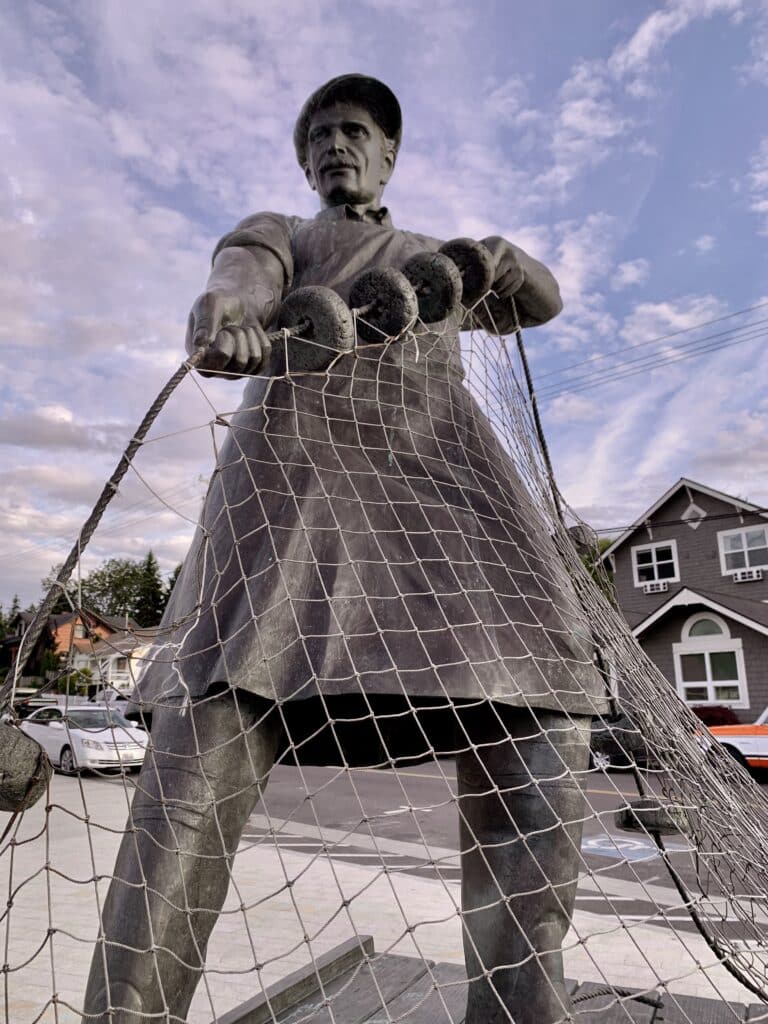
The Lost at Sea sculpture at Skansie Brothers Park in Gig Harbor.
Many area nonprofit organizations host weekend craft sessions and retreats that last two to four weeks.
Gig Harbor would benefit from writing workshops, like those hosted on Whidbey Island at Hedgebrook, but inclusive of both men and women (our fathers, brothers, uncles and partners need these sorts of spaces for creative healing, too.)
Restoration and renewal
A Gig Harbor version of Whidbey Institute’s Restoration and Renewal Retreats would definitely be a regional draw.
Earth Sanctuary, also on Whidbey Island, is a combination sculpture garden, nature reserve and retreat center open to visitors every day of the year during daylight hours. They have Tibetan Prayer Wheels; small stone cairns to a massive dolman inspired by the one in Carnac, France. They even have a sculpture called “Ley Line” which is 56 feet long and made from driftwood. It’s a prime example of how to promote relaxation and renewal by combining art and ecology.
Easy and inexpensive to construct, many towns have labyrinths that are both beautiful to look at and calming to walk. Typically formed into a circle with a single path leading to the center, they invite quiet contemplation as you travel into them and back out again.
A maze is different because it has multiple branching paths and not all of them lead to the middle. With a labyrinth, if you keep walking forward, you will always find the center.
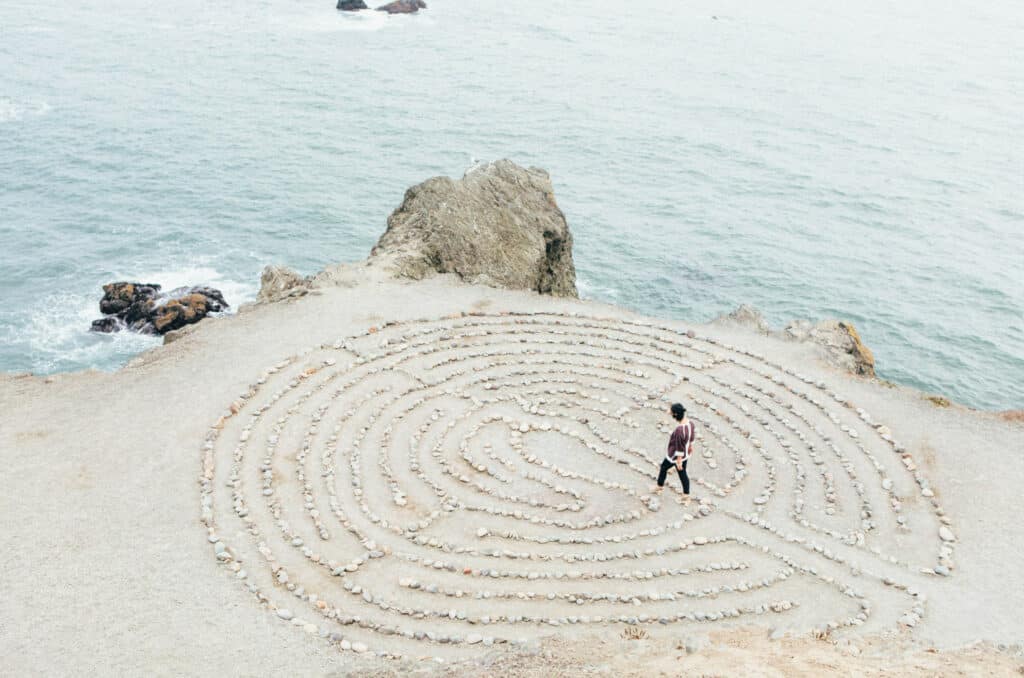
You can aways find the center.
People over profit
There is a tendency to commodify traditions and practices new to North American culture, like the Japanese concept of Shinrin-yoku (forest bathing) and Danes’ hygge (surrounding oneself in a cozy atmosphere).
Sometimes there are legitimate reasons for organizing forest walks and charging consultation fees. But be wary of these opportunities, especially when it’s an activity that people can learn about and practice on their own for little to no money. There are many folks who jump on a trend simply to monetize it, and then abandon it for the next “big thing,”
There are no new taxes required to craft cultural spaces, only a creative mindset. Basically, making the best with what we already have.
For example, many arts organizations combine resources from local and state governments with grants and donations from private sector funding.
Even more doors will open if the objective is to create work that connects local history, ecology and education.
Considering a few of the opportunities mentioned above, like hosting writing retreats and setting aside land to serve as both nature reserve and art installation, the city can expect to draw many residents and tourists, which would qualify the projects for Gig Harbor’s lodging tax fund.
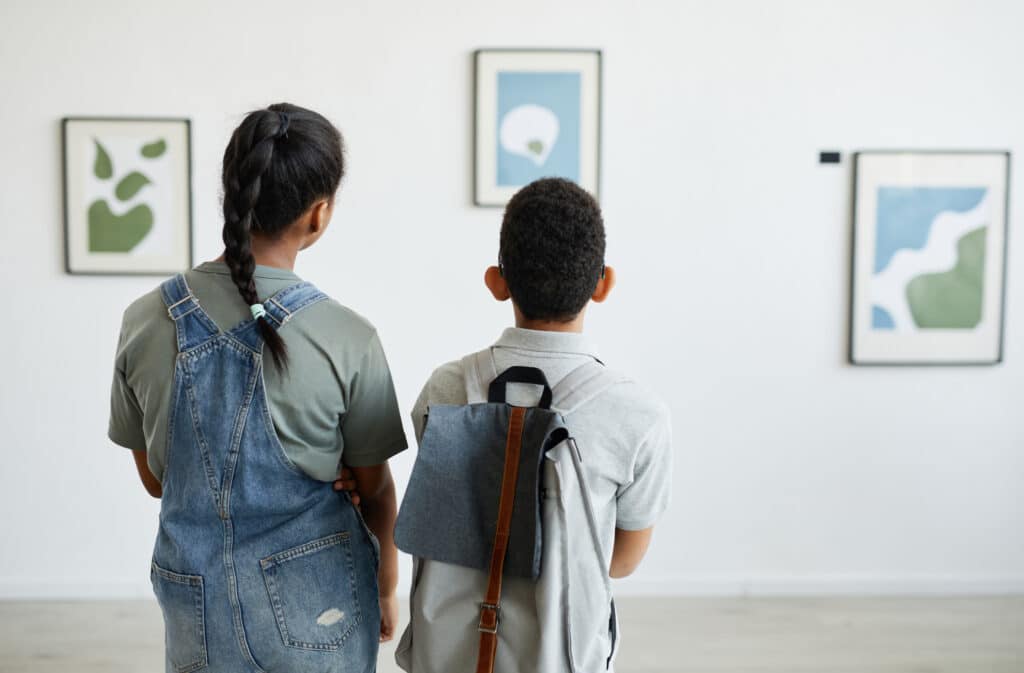
Lead by listening
Ask the people what they want. What are they missing? Culture cannot be found in sports facilities alone.
Developing cultural events, purchasing permanent art and managing performing art facilities, allow visitors to experience something new, while locals enjoy long-lasting benefits. This leads to more organic and sustainable growth for Gig Harbor.
To compare, here are several ways Olympia is creating rich public art traditions at low cost:
- Poet Laureate – $2,500. Biennial Poet Laureate program to promote poetry as an art form, expand access to the literary arts and promote poetry as a community voice that contributes to a sense of place. Funds cover an annual honoraria and small fund for insurance, materials and supplies.
- Arts and Culture Organizations Granting Program – $20,000. The Arts Commission will provide equitable access to the arts for Olympians via GACO. The goal is to expand citizen involvement with the arts, engage underserved populations, and promote the interests of the broader Olympia community.
- Artist-In-Residence Program – $2,250. In partnership with Drexel House, provide a series of drumming and movement workshops.
- Murals in Parks – $10,000. Launch mural project in City Parks, with the intention of creating a welcoming environment where all Olympians are represented.
- Rotating City Hall Exhibitions.
- Traffic/signal box vinyl wraps.
Observe the wealth of experience and talent our city already hosts within its own citizens. We’re surrounded by talented, creative people.
Whimsy and imagination
For example, Jeff Hackney, one of many local artists (although partially retired), was known as a large-scale sculptor working in steel, concrete, wood and bronze. A few of his monumental, easily recognizable works include a whimsical, functioning tricycle called “Chasing the Wind,” and a 12-foot-tall twisting tower of steel called “Polaris” that frames a piece of blue glass, which points to the North Star, exquisitely combining art and science.
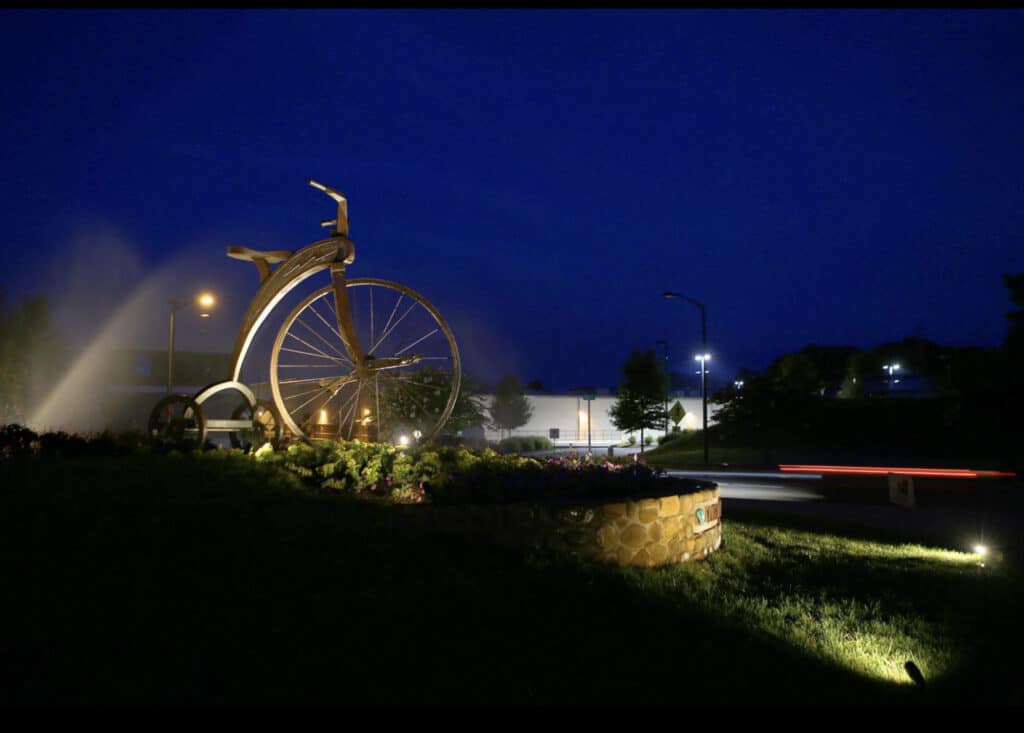
Chasing the Wind, by Jeff Hackney
His red, sculptural swings, which look ready for lift off, are called “The Big Imagine” and were created for the Playable Art Park in Sandy Springs, Georgia.
Now, imagine an entire waterfront sprinkled with “playable art” — the kind of sculptures that you are invited to play with and on. These fabricated structures could tie-in local flora, fauna and fungi.
Giant mushroom swing sets? Salmon sculptures to sit on? Whale tails for lounging, reading and sunning? Why not?!
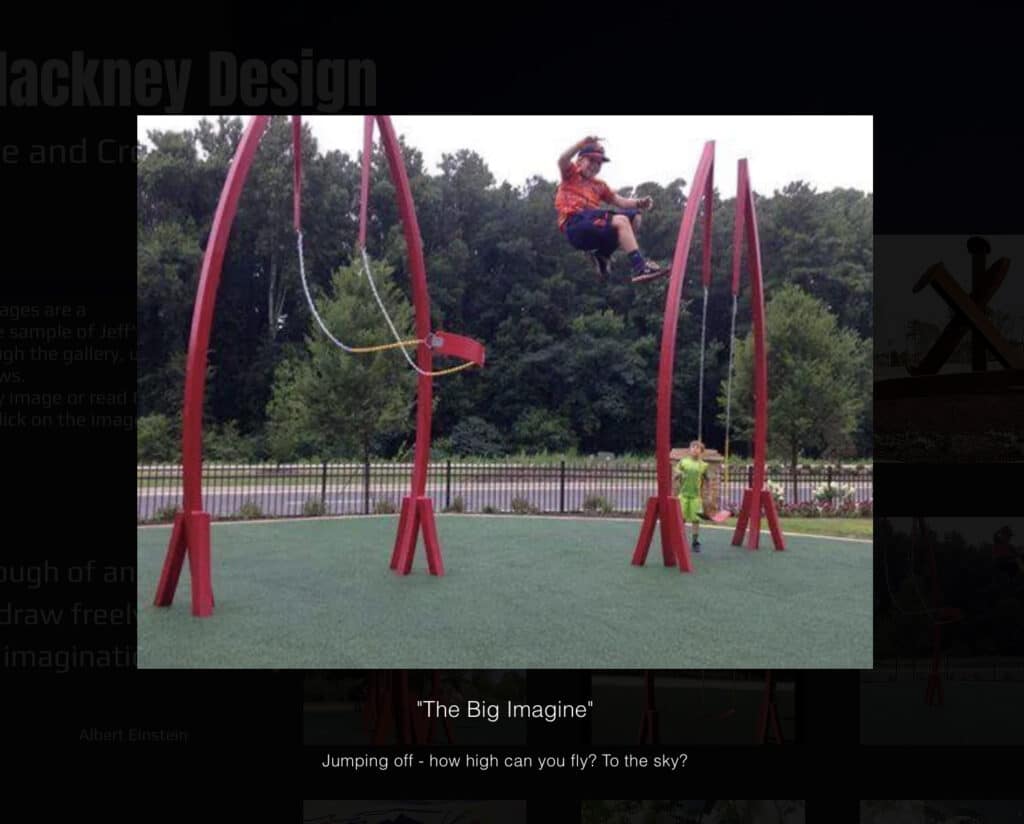
The Big Imagine by Jeff Hackney
Along with orca pods, our local waters and land host a wonderfully wild assortment of flippered, paddled, pawed and feathered creatures to draw artistic ecological inspiration from including; humpback, minke and gray whales, porpoise and dolphins, beavers and otters, coyotes and foxes, raccoons, Bald Eagles, Great Blue Herons and tidal treasures, like moon snails, oysters, geoducks and starfish.
It’s time to invite whimsy and imagination back into our lives by combining community ritual, play and art!
For now, if you are interested in participating in Gig Harbor’s Creative Endeavor Grant, applications are due to the city March 15. Now is the time – go for it!

